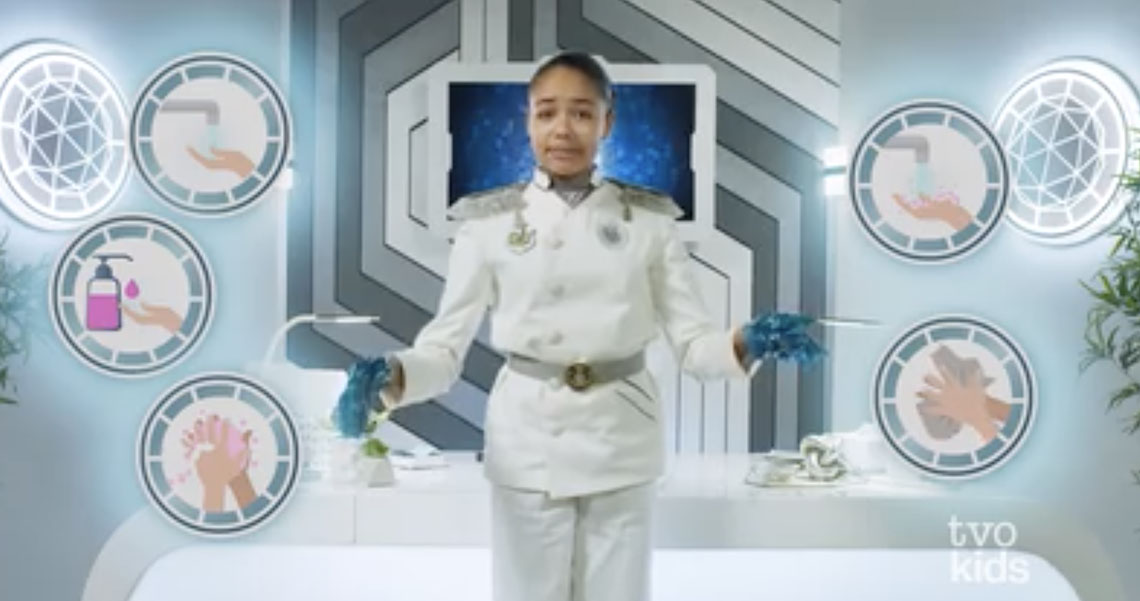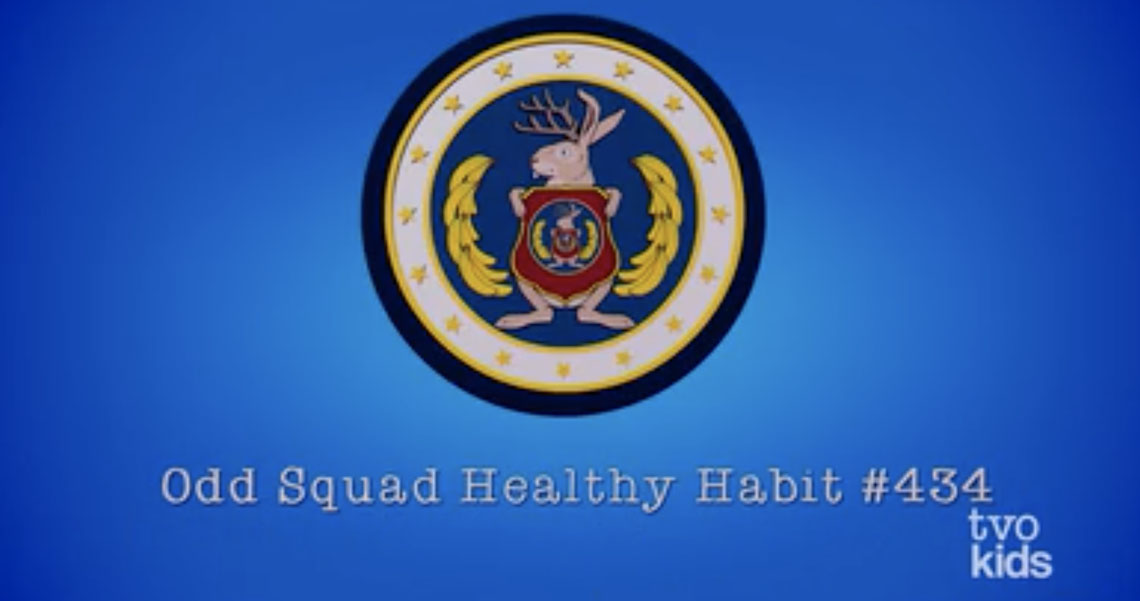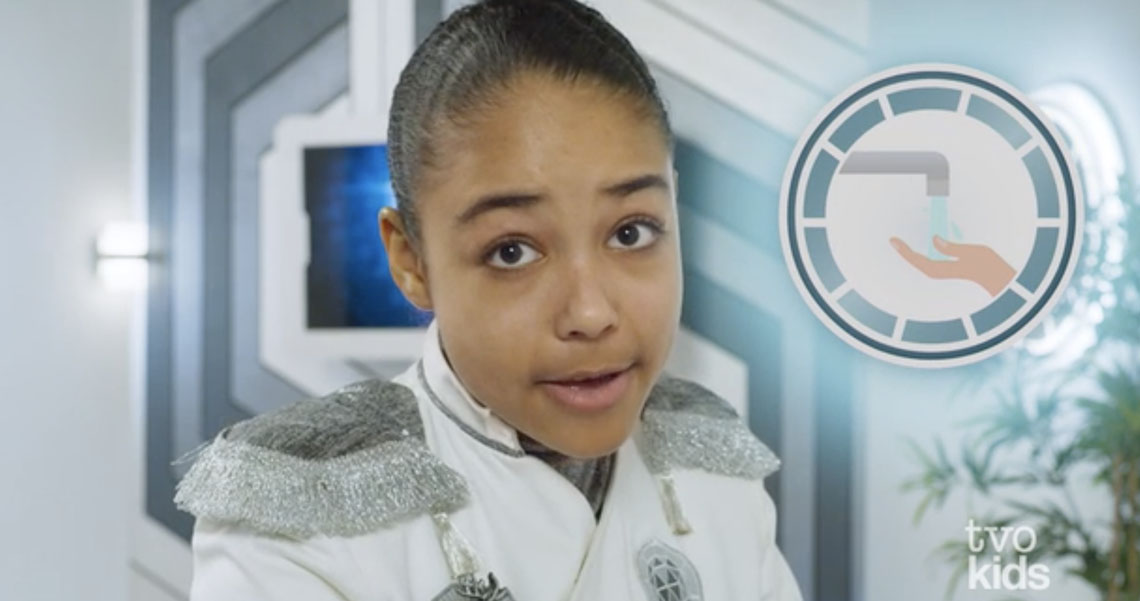Minds On
Wash your hands
Student Success
Think-Pair-Share
Let's explore the following video by Big O. If possible, explore Big O’s message with a partner and consider what is the message communicated through this video? Is the message effective?
Record your ideas using a method of your choice.
Note to teachers: See your teacher guide for collaboration tools, ideas and suggestions.
Action
Public service announcements
The video that you explored in the Minds On section is an example of a Public Service Announcement or PSA.
While the purpose of a text is often to persuade, inform, or entertain an audience, PSAs are created to persuade and also inform.

PSAs are short messages created to communicate information and raise awareness about a specific topic. They also encourage a specific audience to change their attitude and behaviour toward an issue.
Let’s return to the Odd Squad PSA in the Minds On section to further explore the elements of a PSA. You’ll practice identifying the purpose, message, and intended audience of Big O’s PSA.
Elements of a PSA
Student Success
Think-Pair-Share
Explore the Odd Squad PSA in the Minds On section a second time and consider:
- What is the purpose of Big O’s message?
- What is Big O’s message?
- Who is the intended audience of the PSA? Why do you think Big O’s was selected to communicate the message?
If possible, discuss your ideas with a partner.
Note to teachers: See your teacher guide for collaboration tools, ideas and suggestions.
Wash your hands PSA elements
Press the following tabs to explore the PSA elements.
The purpose of this PSA is to learn healthy habits from the Odd Squad Mobile Unit. This particular PSA focuses on how to wash your hands properly.

The Big O’s message is how to properly wash your hands in five steps. She explains that it’s important to wash your hands for at least 20 seconds, which is the length of the official Odd Squad song. To demonstrate, she sings the song as she washes her hands in the PSA.
- Connecting the official Odd Squad song to handwashing is a helpful strategy. One of the keys to an effective and persuasive PSA is a message that sticks with the viewer and/or listener and persuades them to act (e.g., washing your hands properly for 20 seconds).

The intended audience is school-aged children. How do we know? For starters, the message is communicated to the leader of every Odd Squad precinct in the world. The Odd Squad show is targeted at children ages 5 and up. Furthermore, the audio and visuals are accessible to or easy to understand for children. There are only five steps, and the steps can be accompanied by a song.

Is it a PSA or a commercial advertisement?
Select the correct answer.
Plan your PSA
Create a plan for your own PSA to raise awareness among your school community about a specific issue. The purpose of your PSA should be to persuade and inform. It should also have one message and a target audience.
Select a topic that you care about and/or is relevant to you. For example, you could create a PSA for Earth Day or World Kindness Day.

Student Success
Think-Pair-Share
If possible, work with a partner to brainstorm issues that you want to bring attention to. A brainstorm for Earth Day, for example, might include issues like single-use plastic, water usage, climate change, or air pollution.
Keep in mind that PSAs are short and do not require very much script writing. This means you are aiming to create a concise and to-the-point message, that will provide your target audience with relevant information, and persuade them to take some type of action.
You can use the PSA Outline Template to plan for your PSA in your notebook or using the following fillable activity document. The second lined page is for the optional “Create a Script for Your PSA” activity in the Discover More segment found in the Consolidation section.
Here are your steps:
- Step 1: Start by identifying an issue that is important to you and select one main idea.
- Step 2: Then, consider how much you know about this issue or topic. You can use a combination of your background knowledge and any research that you need to conduct to build an up-to-date and convincing message.
- Step 3: Next, consider, who is affected by this issue? Are you targeting students your age, teachers, or the people who live in your community? Your target audience will inform how you present your message and well as the action you want them to take.
- Step 4: Determine a possible call to action. Make a statement that will encourage your audience to change and/or rethink and take action.
|
Name(s):
|
|
Topic:
|
|
Target Audience:
|
|
Main Message:
|
|
Research:
|
|
Call to Action:
|
Press the ‘Activity’ button to access PSA Outline Template.
Note to teachers: See your teacher guide for collaboration tools, ideas and suggestions.
My PSA Checklist:
Consolidation
Think about what you have learned

Student Success
Think-Pair-Share
If possible, share your PSA plan with a partner.
Then, use the following questions to reflect on your learning. You can record your responses using a method of your choice.
- Would visuals enhance your message? Why or why not?
- Do you think your PSA will persuade viewers and/or listeners to change their behaviour? Explain your thoughts.
- What have you learned through planning a PSA that you can use to make your presentations more effective?
Note to teachers: See your teacher guide for collaboration tools, ideas and suggestions.
Reflection
As you read through these descriptions, which sentence best describes how you are feeling about your understanding of this learning activity? Press the button that is beside this sentence.
I feel…
Now, record your ideas using a voice recorder, speech-to-text, or writing tool.
Press “Discover More” to extend your skills.
Discover MoreCreate a script for your PSA
Turn your PSA plan into a script. Your script should include the key points about the issue you chose, as well as the action you want your target audience to take. Think about how you’ll grab your audience’s attention. Will you start your script with a statistic? A joke?
To accomplish this activity, you can complete the second lined page in the PSA Outline Template that you used earlier in the “Plan your PSA” activity in the Action section, in your notebook or using the following fillable activity document. You can also choose a method of your choice.
Press the ‘Activity’ button to access PSA Outline Template.
If possible, create an audio recording of your PSA script. You or a partner can read it aloud and record it.
Create a storyboard for your PSA
Once you have a script, create a storyboard for your PSA. You can create your storyboard using the PSA Storyboard Template template in your notebook or using the following fillable activity document. You may also choose any method of your choice.
A storyboard is a graphic organizer that provides a visual representation of the “story” that you will tell. Essentially, you will plan out the video and/or visual components of your PSA.
In the blank boxes, you can draw and/or describe images of what will appear from one moment to the next (or frame-by-frame).
Information related to the visuals goes on the lines underneath the boxes. This is where you include information about any sound or visual effects, music, and dialogue that a specific frame might have.
Press the ‘Activity’ button to access PSA Storyboard Template.